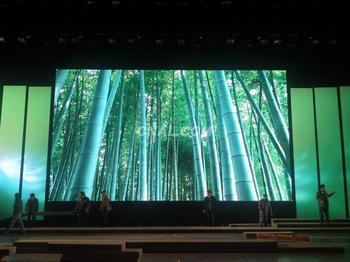 Recently, according to Shanghai media reports, visible light communication (VLC) has made new progress - no WiFi signal, just turn on a LED light to achieve your desire to wireless Internet access. It is reported that researchers connect the network signal to a one-watt LED lamp, and the four computers under the lights can be connected to the Internet with a maximum speed of 3.75G and an average speed of 150Mbps. In November, the prototype will be unveiled at the Shanghai Industry Fair. Compared with international technology, its rate is faster, but it still fails to overcome the defects of non-diffraction and wall penetration.
Recently, according to Shanghai media reports, visible light communication (VLC) has made new progress - no WiFi signal, just turn on a LED light to achieve your desire to wireless Internet access. It is reported that researchers connect the network signal to a one-watt LED lamp, and the four computers under the lights can be connected to the Internet with a maximum speed of 3.75G and an average speed of 150Mbps. In November, the prototype will be unveiled at the Shanghai Industry Fair. Compared with international technology, its rate is faster, but it still fails to overcome the defects of non-diffraction and wall penetration. LiFi comes to China with an average speed of 150 Mbps
In other words, visible light communication is not very mysterious: Researchers use microchips to control the on-off changes of LED light bulbs and encode binary data into light signals: lights on indicates 1 and lights off indicates 0. This information can be captured by the receiver and demodulated, but the human eye will not notice the change of LED lights - because they flash too fast. The researchers connected the network signal to a LED lamp with a power of 1W, and the four computers connected to the receiver were able to access the Internet.
Compared to WiFi, visible light communication is also known as LiFi. In fact, domestic technology is not the first time in the world. As early as 2011, Harald Hass, a professor at the University of Edinburgh in the United Kingdom, put forward this concept at TEDGlobal, and in October 2012 realized the technology of using optical data transmission. .
However, domestic LiFi technology, whether it is the highest rate of 3.75Gbps or the average rate of 150Mbps, does not lag behind the world. Moreover, the width of the visible light spectrum reaches 10,000 times that of the radio frequency spectrum. This means that visible light communication can bring higher bandwidth. The additional benefit is that there is no need to add infrastructure.
Industrialized but hard to replace WiFi
This technology has already begun the first step of commercialization this month. PureVLC, which is the chief scientific officer of Haas, sold the first unit to a US medical supplier at a price of 5,000 pounds (approximately RMB 49,300). LiFi device. Can LiFi come to the commercial avenue and compete with WiFi? It's too early!
The shell and shell technology personage reveals, visible light communication can't penetrate the object, can't diffract too, so if the receiver is blocked, then the signal will be cut off. At the same time, the uplink transmission also requires an LED light whose complexity exceeds WiFi. We must also see that mobile devices such as mobile phones and tablet PCs are still receiving signals from visible light communications. In the dark light environment, it is not clear whether the signal transmission is affected or not. Therefore, with the obvious advantages of LiFi, defects are also difficult to solve.
Researchers at Fudan University also revealed that there is still a gap between China's and the international frontier in LED chips and multi-input multi-output (MIMO) visible light communication systems. For example, using ordinary lighting LED chips, the performance of communications is subject to certain restrictions. There are also gaps in equipment and chip packaging.
14.8 volt lithium ion battery packs
Shenzhen Powercom Electronics Co., Ltd. , https://www.expowercome.com